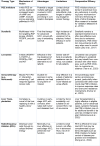A novel phosphodiesterase target as a therapeutic approach: inhibiting DEN-induced hepatocellular carcinoma progression
- PMID: 40166422
- PMCID: PMC11956523
- DOI: 10.17179/excli2024-7941
A novel phosphodiesterase target as a therapeutic approach: inhibiting DEN-induced hepatocellular carcinoma progression
Abstract
Hepatocellular Carcinoma (HCC) is one of the most common and fatal types of liver cancer worldwide; in this sense, Diethylnitrosamine (DEN) has been established as a potent carcinogen affecting the development and progression of this disease. The present work focused on determining whether phosphodiesterase (PDE) enzymes, especially PDE5, may serve as targets in the therapeutic treatment of DEN-induced HCC. PDE5 inhibitors, widely used as therapeutic drugs for cardiovascular diseases and erectile dysfunction, have recently been found to be promising in preclinical cancer models through the modulation of key signaling pathways implicated in the progression of tumors, such as the cGMP-PKG, JNK, and MAPK pathways. These pathways are very important for cell proliferation, apoptosis and metastasis, and their dysregulation contributes to the aggressive nature of HCC. This study assessed the potential of PDE5 inhibitors to suppress proliferation, induce apoptosis, and alter the tumor microenvironment, thus potentially improving standard chemotherapy and immunotherapy interventions. By inhibiting certain PDE isoforms with these drugs, an anticancer response might occur as part of a complex mechanism that acts on both cancer cells and the microenvironment favorable for tumor growth. A preliminary review indicated that PDE inhibitors may be a promising therapeutic approach for overcoming some of the shortcomings of current treatments, particularly the development of resistance and the toxic effects of these treatments. Additional clinical investigations are necessary to determine the safety profile, appropriate amount of Osage, and long-term efficacy of these agents in the treatment of HCC, particularly in DEN-induced animal models. This study contributes to the expanding body of evidence supporting the use of PDE inhibitors in cancer treatment.
Keywords: Diethylnitrosamine (DEN); HCC; JNK pathway; MAPK pathway; PDE5; Phosphodiesterase (PDE) inhibitors; cGMP-PKG pathway; cancer therapy; tumor microenvironment.
Copyright © 2025 Kumar et al.
Conflict of interest statement
The authors declare no competing interests.
Figures








Similar articles
-
Beyond Erectile Dysfunction: cGMP-Specific Phosphodiesterase 5 Inhibitors for Other Clinical Disorders.Annu Rev Pharmacol Toxicol. 2023 Jan 20;63:585-615. doi: 10.1146/annurev-pharmtox-040122-034745. Epub 2022 Oct 7. Annu Rev Pharmacol Toxicol. 2023. PMID: 36206989 Review.
-
Development of novel phosphodiesterase 5 inhibitors for the therapy of Alzheimer's disease.Biochem Pharmacol. 2020 Jun;176:113818. doi: 10.1016/j.bcp.2020.113818. Epub 2020 Jan 21. Biochem Pharmacol. 2020. PMID: 31978378 Free PMC article. Review.
-
The novel functions of cGMP-specific phosphodiesterase 5 and its inhibitors in carcinoma cells and pulmonary/cardiovascular vessels.Curr Top Med Chem. 2007;7(4):437-54. doi: 10.2174/156802607779941198. Curr Top Med Chem. 2007. PMID: 17305584 Review.
-
Inhibition of Colon Cancer Cell Growth by Phosphodiesterase Inhibitors Is Independent of cGMP Signaling.J Pharmacol Exp Ther. 2022 Apr;381(1):42-53. doi: 10.1124/jpet.121.001075. Epub 2022 Feb 2. J Pharmacol Exp Ther. 2022. PMID: 35110391 Free PMC article.
-
Phosphodiesterase type 5 as a pharmacologic target in erectile dysfunction.Urology. 2002 Sep;60(2 Suppl 2):4-11. doi: 10.1016/s0090-4295(02)01686-2. Urology. 2002. PMID: 12414329 Review.
References
-
- ACS, American Cancer Society. Liver Cancer Stages | Liver Cancer Classification. 2024. [14 June 2024]. Available from: https://www.cancer.org/cancer/types/liver-cancer/detection-diagnosis-sta....
-
- Ahmad N, Lesa KN, Sudarmanto A, Fakhrudin N, Ikawati Z. The role of phosphodiesterase-1 and its natural product inhibitors in Alzheimer’s disease: A review. Front Pharmacol. 2022;13:1070677. doi: 10.3389/fphar.2022.1070677. Available from: http://dx.doi.org/10.3389/fphar.2022.1070677. - DOI - DOI - PMC - PubMed
-
- Al-Ostoot FH, Salah S, Khamees HA, Khanum SA. Tumor angiogenesis: Current challenges and therapeutic opportunities. Cancer Treat Res Commun. 2021;28:100422. - PubMed
Publication types
LinkOut - more resources
Full Text Sources
Research Materials
